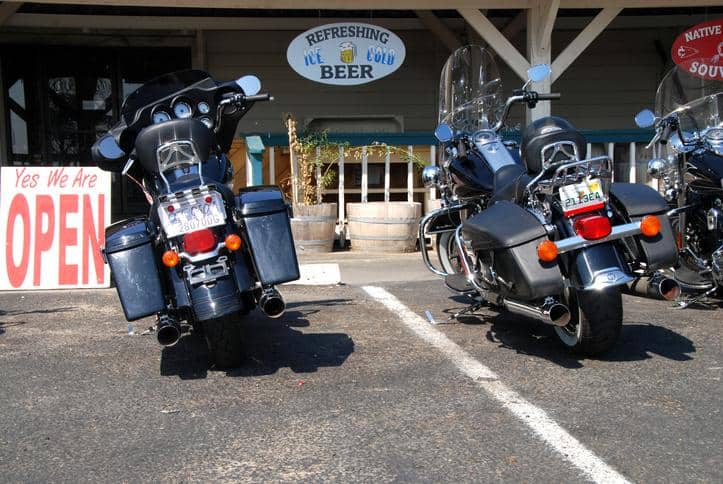

(844) - 444-4444

Riding a motorcycle can be a risky way to get around.
Between 2000 and 2009, the number of motorcycle fatalities per billion passenger miles was 212.57 compared to 7.28 for cars and trucks, according to a study published in Research in Transportation Economics.
Motorcyclists who choose to ride drunk endanger themselves, other motorists, and pedestrians.
According to the National Highway Transportation Safety Administration:
The average motorcycle weighs between 300 and 500 pounds. A pedestrian doesn’t fare well in a run-in with a machine like that.
Impaired motorcyclists are more likely to speed, fail to obey traffic laws, not use turn signals or headlights, and fail to see pedestrians in crossing areas.
In 2020, motorcycle riders killed in traffic crashes at night (40 percent) were almost three times more likely found to be alcohol-impaired than those killed during the day (14 percent.
Alcohol can impair thinking, reasoning, and muscle coordination, which are necessary to safely operate a motor vehicle. Impaired motorists may speed, violate traffic laws, fail to use turn signals or headlights, or not notice pedestrians in crosswalks.
In 2020, 27 percent of motorcyclists killed in fatal accidents were under the influence of alcohol. Motorcyclists in fatal accidents in 2020 had higher percentages of alcohol impairment than drivers.
Impaired motorcyclists pose a danger not only to themselves but also to other motorcyclists, pedestrians, animals, and the drivers of motor vehicles.
The odds of encountering an impaired motorcyclist are greater at night and on weekends. That’s when most crashes happen, according to motorcycle.com. In 2007, about 57 percent of alcohol-impaired operators (motorcycle or car) were killed in weekend crashes, particularly between the hours of 6 p.m. and 9 p.m., according to some reports.
Here are some signs that a motorcyclist may have been drinking:
Research from the NHTSA found that 42 percent of fatal motorcycle accidents involving a car occurred when the driver turned left in front of the motorcyclist.
The NHTSA conducted a study to understand the pros and cons of motorcycle interlocks in 2017. The agency interviewed ignition interlock device manufacturers, state officials, and a handful of motorcycle riders to see if these devices would help reduce alcohol-related crashes and fatalities on motorcycles.
They estimated that motorcycle interlocks likely represented less than 0.1 of the 279,000 devices in service. Here’s a few of the key issues they found with motorcycle interlocks:
Also, the NHTSA discovered that only two manufacturers provided limited support for ignition interlocks on motorcycles in the United States.
If you’ve been injured in an accident with a drunk motorcycle driver, contact William Mattar, P.C. today. Our accident attorneys can stand up for your rights and fight for you to receive maximum compensation. Schedule a free initial consultation today or call (844) 444-4444 to speak to a team member right now. We are available 24/7 to take your call.





